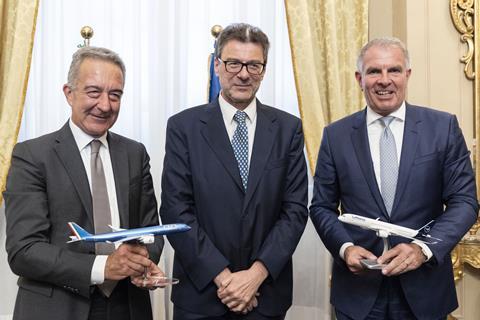Italian carrier ITA Airways is performing ahead of the business plan drawn up last year as Lufthansa Group prepares to take a stake in the airline.
In March last year, ITA’s board of directors approved a ”business plan already shared with Deutsche Lufthansa” as it worked towards finalising a deal under which the German airline group would take a 41% stake in the Italian carrier.

Speaking at a press conference in Rome on 3 July, after the European Commission gave its conditional backing for the deal, Spohr said ITA was tracking ahead of plan.
”I am very happy to say the current performance of ITA is better than the joint business plan we had agreed on more than a year ago,” he says. “So my expectation is we will continue to perform better than the business plan. We can use the money to invest in more airplanes and to grow faster.”
Spohr has previously said ITA could be profitable by 2025, though that was based on Lufthansa securing clearance for its acquisition by the end of last year.
Lufthansa now expects to close the deal, which is contingent on the Commission approving the implementation of proposed remedy solutions, in the fourth quarter of this year.
Spohr was also upbeat about the potential for ITA to be sustainably profitable despite the long loss-making history of predecessor Italian flag carrier Alitalia.
”I think ITA has less of a problem of its costs, because it is a very lean, well-managed company,” says Spohr, noting the bigger issue for the carrier is around its revenues. ”It is too small to compete in the world alone against the American carriers in the Americas or the Asian carriers in Asia. And even in Italy, ITA is only number four because the three low-cost carriers are so strong.
”So I think our challenge will be to use the combined size of ITA Airways and Lufthansa Group to be large enough to execute commercial partnerships around the world to make sure the load factor goes up and the average yield goes up as well.”


























